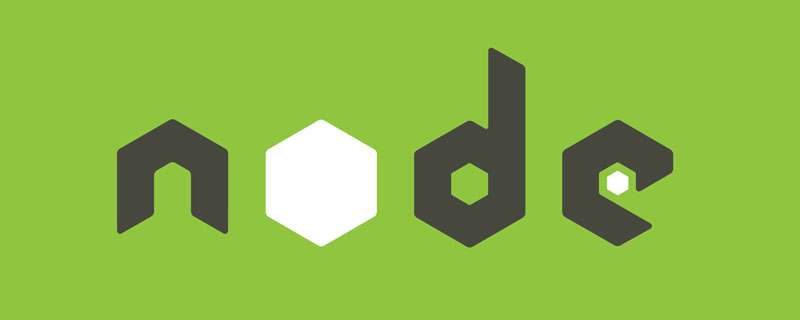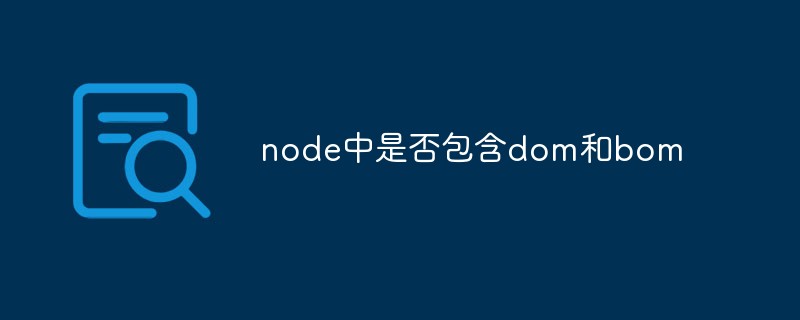This time I will show you how to use node to create a readable flow pattern, and what are the precautions for using node to create a readable flow pattern. The following is a practical case, let's take a look.
The readable stream of node is based on the event
The flow mode of the readable stream. This flow mode will have a "switch", and every time the "switch" is turned on When the flow mode takes effect, if this "switch" is set to pause, then this readable stream will notread the file until the "switch" is reset to flow.
Reading file process
The process of reading file content is mainly:- Open the file. If the file is successfully opened, the open event will be triggered. If the opening fails, the error event and close event will be triggered to close the file.
- Start reading the contents of the file and listen to the data event. The data is in a flowing state. Reading can be paused by modifying the status of the switch.
- Every time the content is read, it is put into the cache and the data is published through the data event.
- After reading the contents of the file, close the file.
node readable stream parameters
First we create a readable stream through the fs module. The readable stream accepts two parameters:- The first parameter is the file address to be read. Specify here which file you want to read.
- The second parameter is optional. This parameter is an object used to specify some specific parameters of the readable stream.
- highWaterMark: Set the high water mark. This parameter is mainly used to read files. When, the readable stream will read the contents of the file into the cache, and here we need to create a buffer to cache the data, so this parameter is used to set the size of the buffer. If this parameter is not set, readable The default configuration of the stream is 64k.
- flags: This parameter is mainly used to set the execution mode of the file. For example, our specific operations are suitable for reading files or writing files. If we are writing to a file, we use w. If you are reading a file, then this operator should be r.
| Meaning | |
|---|---|
| Reading the file, the file does not exist and an error is reported | |
| Read and write, the file does not exist and an error is reported | |
| Read the file synchronously and ignore the cache | |
| Write the file, create it if it does not exist, clear it if it exists | |
| Write the file exclusively | |
| Read and write the file, create it if it does not exist, clear it if it exists | |
| Similar to w, exclusive mode Open | |
| Append writing | |
| Similar to a, write exclusively | |
| Read and append writing, create if it does not exist | |
| The role is the same as a Similar, but opens the file exclusively |
The above is the detailed content of How to use node to create a readable flow pattern. For more information, please follow other related articles on the PHP Chinese website!
 node、nvm与npm有什么区别Jul 04, 2022 pm 04:24 PM
node、nvm与npm有什么区别Jul 04, 2022 pm 04:24 PMnode、nvm与npm的区别:1、nodejs是项目开发时所需要的代码库,nvm是nodejs版本管理工具,npm是nodejs包管理工具;2、nodejs能够使得javascript能够脱离浏览器运行,nvm能够管理nodejs和npm的版本,npm能够管理nodejs的第三方插件。
 Vercel是什么?怎么部署Node服务?May 07, 2022 pm 09:34 PM
Vercel是什么?怎么部署Node服务?May 07, 2022 pm 09:34 PMVercel是什么?本篇文章带大家了解一下Vercel,并介绍一下在Vercel中部署 Node 服务的方法,希望对大家有所帮助!
 node爬取数据实例:聊聊怎么抓取小说章节May 02, 2022 am 10:00 AM
node爬取数据实例:聊聊怎么抓取小说章节May 02, 2022 am 10:00 AMnode怎么爬取数据?下面本篇文章给大家分享一个node爬虫实例,聊聊利用node抓取小说章节的方法,希望对大家有所帮助!
 node导出模块有哪两种方式Apr 22, 2022 pm 02:57 PM
node导出模块有哪两种方式Apr 22, 2022 pm 02:57 PMnode导出模块的两种方式:1、利用exports,该方法可以通过添加属性的方式导出,并且可以导出多个成员;2、利用“module.exports”,该方法可以直接通过为“module.exports”赋值的方式导出模块,只能导出单个成员。
 安装node时会自动安装npm吗Apr 27, 2022 pm 03:51 PM
安装node时会自动安装npm吗Apr 27, 2022 pm 03:51 PM安装node时会自动安装npm;npm是nodejs平台默认的包管理工具,新版本的nodejs已经集成了npm,所以npm会随同nodejs一起安装,安装完成后可以利用“npm -v”命令查看是否安装成功。
 node中是否包含dom和bomJul 06, 2022 am 10:19 AM
node中是否包含dom和bomJul 06, 2022 am 10:19 AMnode中没有包含dom和bom;bom是指浏览器对象模型,bom是指文档对象模型,而node中采用ecmascript进行编码,并且没有浏览器也没有文档,是JavaScript运行在后端的环境平台,因此node中没有包含dom和bom。
 什么是异步资源?浅析Node实现异步资源上下文共享的方法May 31, 2022 pm 12:56 PM
什么是异步资源?浅析Node实现异步资源上下文共享的方法May 31, 2022 pm 12:56 PMNode.js 如何实现异步资源上下文共享?下面本篇文章给大家介绍一下Node实现异步资源上下文共享的方法,聊聊异步资源上下文共享对我们来说有什么用,希望对大家有所帮助!


Hot AI Tools

Undresser.AI Undress
AI-powered app for creating realistic nude photos

AI Clothes Remover
Online AI tool for removing clothes from photos.

Undress AI Tool
Undress images for free

Clothoff.io
AI clothes remover

AI Hentai Generator
Generate AI Hentai for free.

Hot Article

Hot Tools

ZendStudio 13.5.1 Mac
Powerful PHP integrated development environment

mPDF
mPDF is a PHP library that can generate PDF files from UTF-8 encoded HTML. The original author, Ian Back, wrote mPDF to output PDF files "on the fly" from his website and handle different languages. It is slower than original scripts like HTML2FPDF and produces larger files when using Unicode fonts, but supports CSS styles etc. and has a lot of enhancements. Supports almost all languages, including RTL (Arabic and Hebrew) and CJK (Chinese, Japanese and Korean). Supports nested block-level elements (such as P, DIV),

SecLists
SecLists is the ultimate security tester's companion. It is a collection of various types of lists that are frequently used during security assessments, all in one place. SecLists helps make security testing more efficient and productive by conveniently providing all the lists a security tester might need. List types include usernames, passwords, URLs, fuzzing payloads, sensitive data patterns, web shells, and more. The tester can simply pull this repository onto a new test machine and he will have access to every type of list he needs.

WebStorm Mac version
Useful JavaScript development tools

DVWA
Damn Vulnerable Web App (DVWA) is a PHP/MySQL web application that is very vulnerable. Its main goals are to be an aid for security professionals to test their skills and tools in a legal environment, to help web developers better understand the process of securing web applications, and to help teachers/students teach/learn in a classroom environment Web application security. The goal of DVWA is to practice some of the most common web vulnerabilities through a simple and straightforward interface, with varying degrees of difficulty. Please note that this software







